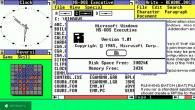Many lovers of new products in the field of smartphones have long paid attention to.
However, it is not so easy to deal with all the know-how on your own, which is where the question arises for what the global firmware is needed and what it is.
Content:
Definition of global firmware
In technical language, firmware refers to the operating system that is used as the basic material for any smartphone to work.
Since manufacturers are constantly working on improving it, from time to time the phone offers to update the firmware version so that the user can appreciate the new features of his gadget.
The product developed by the company has become a leader in the field of secure data storage.
However, with the development of the Chinese market, a number of technical devices, along with all the "stuffing", was replenished. On the existing base of Androind, manufacturers such as Flyme (Xiaomi) have decided to create their own versions of global firmware.
The original view of the new invention was planned to be used exclusively in Chinese, since there was no such forecast that could calculate such great popularity in a competitive market.
In the first version, there were only two languages: national and English, only relevant applications for the Chinese population were used, was not available.
The common people called this version of the firmware "Chine ROM".
As demand for Chinese smartphones has skyrocketed, the main task of manufacturers was to expand the existing characteristics. Thus, the firmware appeared in many languages, hence the name Global ROM.
Types of firmware, given the origin
The initial firmware has two options: standard (China ROM, two languages available: Chinese and English) and global (Global ROM, available for use in many languages of the world).
1 China ROM as the name implies, it is relevant for the local population in China, since it has a number of its own characteristics. It has installed applications, functionalities, taking into account cultural interests. In addition, there are language restrictions as the firmware contains only two languages: Chinese and English.
2 Global ROM means multispectrum oriented towards other cultures. In this case, there are no applications relevant to the first option. Most of the services are present, which is especially common in the United States and Europe.
Classification by type
1 Weekly (Developer ROM). The most popular type of firmware, since all the latest changes can be obtained through its use. It is an official legacy from developer Xiaomi. Generally, the update occurs every week on Friday, excluding Chinese public holidays. Often, if there are errors in the new firmware, then you should not worry, since they will be eliminated in the next weekly update.
2 Stable (Stable ROM). As in the first version, it is the official creation of the Chinese developer MIUI (protege of Xiaomi). However, there is a difference: this firmware contains only measured parameters and functions, the work of which is maximally debugged. The best option for those who are not in pursuit of new bugs and are not involved in testing technical innovations. An important difference from other versions of global firmware is inconsistent updates, since it uses exclusively debugged mechanisms
3 Unofficial, custom (Ported ROM). Built on a variety of functions and programs that were created by third-party specialists. The standard, proven firmware is used as a basis. In this case, updates do not happen all the time, so it is impossible to calculate a specific date. Sometimes the interval is up to several months
4 Samopal. It is not an independent category of global firmware. As a rule, firmware data is presented at the lowest possible cost, since it is collected by amateurs with numerous errors, inconvenient interface, and poor-quality translation. Since the quality of this type is poor, it is most reasonable to use one of the three options presented above.
Sizes of global firmware
It is customary to highlight everything two size ranges of existing firmware:
- Full (Full ROM). A complete customized package that is most often installed the first time you use the gadget. It contains all the necessary programs and applications that you need to work with the device. As a rule, the weight of such a package is no more than 2 GB.
- Update (Incremental ROM). As the name implies, such firmware is focused exclusively on new services, applications and bug fixes from previous versions. It is important to note that due to its low weight (up to 200MB), almost every smartphone has technical support for such a package.
Differences between Chinese and global firmware
Many users are sure that apart from the lack of support for the Russian language in the English-Chinese version, the rest of the program is no different from the global one.
- China ROM is indeed characterized by the lack of support for the Russian language. But there are also models with basic firmware that have completely eradicated this flaw. However, it is important to understand that when using such patches, there is no security at all. Therefore, trusting personal information means taking really serious risks.
- Everyone's favorite is also missing, and converting your own gadget is possible only with the help of unofficial versions
- China ROM contains exclusively services intended for use by the Chinese population, therefore, the question of how relevant they are for residents of other countries remains open. It is also worth noting that the work of such a gadget is characterized by lower performance. Errors occur frequently
- There are situations when the manually installed one refuses to continue working, due to the fact that the system recognizes it as malware, so it is unlikely to be able to fully exploit it.
Updates
All types of official firmware are subject to upgrade from the air. The only exception can be the moment when problems or errors occurred during the download process.
If there is no automatic update, then there is an alternative option - download in manual mode.
To avoid the risk of getting a virus or downloading unwanted programs, it is recommended that you only use trusted sources.
The most popular is the official website of the MIUI manufacturer. As for custom options, they can only be found in unofficial sources.

If we talk about custom firmware, then it is impossible to use it in the same way as the official one. Without fail, a jump from the resource is required.
The situation when the operating system becomes outdated and is not able to qualitatively load new games or applications is typical by nature.
If the phone starts to work incorrectly, or freezes, then this is the first sign that it is time to change the firmware. In this case, in order to expand the capabilities of the gadget, you should not resort to downloading the official global firmware, because in the end you will get the same result. They help to increase the performance of the phone.
However, this firmware still has its advantages and disadvantages.
Advantages and disadvantages
Advantages:
- The main advantage of custom firmware is regular updating, which involves the use of completely new features, or the improvement of old functions. It is worth noting that third-party developers often visit forums with discussions and read the wishes of customers who carefully follow new software or updates. This is extremely important, since reviews help to make the next version an order of magnitude higher by changing the parameters or improving them. For example, the user can indicate that the battery charge indicators are displayed incorrectly. In this case, the unofficial developer will make every effort to correct such a flaw.
- However, users keeping up with the times note another advantage of custom firmware - the absence of additional garbage that clogs up the phone's memory with unnecessary programs. The performance of the phone increases with a change in the firmware, since the initially available code is considered optimized, which means that you can download the upgrade at any time. Since the firmware does not preserve data from third-party applications, charging the gadget will last much longer.
- By using custom firmware, you can install the latest version. It should be noted that not a single manufacturer that produces smartphones or gadgets is engaged in updating the operating system, therefore, it is possible to install the newest version only with the support of an unofficial firmware.
Flaws:
- First of all, the main drawback is associated with the fact that each user must have the extended capabilities of the copyright holder, which may not always lead to the desired consequences. As an opposite effect, there is always the possibility of getting together an ordinary plastic brick that will not respond to even the most trivial commands. Therefore, before you start pouring, you need to read and thoroughly study all the information about the firmware.
- If the phone breaks down, it is important to understand that after flashing, warranty service is no longer possible, so repairs can be quite expensive. Sometimes it turns out that taking risks and installing an unofficial version of the firmware is not so relevant, since the user may have enough of the existing functions, so there is no point in doing such actions unnecessarily.
- Before downloading the firmware, it is recommended to find out as much information as possible about it. There are many forums on the Internet where advanced users discuss this or the version, what are its shortcomings, what does not work after downloading, whether there are viruses. It is not advisable to take risks and download the firmware from a source unknown to anyone, as these may be scammers.
Installation instructions
Modern users of Chinese-made smartphones have long been accustomed to ordering goods directly from companies.
And although the cost of the gadget is an order of magnitude lower, there is still one caveat - the presence of China ROM, which does not support the Russian language.
To understand the question of how to install the global firmware, take the Meizu MX6 as an example:
1 Receives Root. To do this, you must either enable mobile data transmission. We register or go through the Flyme account authorization. If you already have a login, then immediately go to the fifth point

2 Install the Play Market. Since the design is unusual, in a local store you need to type in Google search and download the file installer... Next, you need to enter all the data from the usual Google account. Download the SuperSu program. should be saved in the phone memory. Moving to internal memory


4 Open the last downloaded Flash Fire program and tick the following items: 1-3, skip 4, 5-6. Next, click Flash after which the download of the new firmware should begin.

If the instruction is executed correctly, then the phone should restart and.
At the time of this writing, the Xiaomi Redmi Note 4X smartphone occupies the leading positions in sales in Russia and when buying from most of our customers there are many questions related primarily to such moments:
- What is the difference between "Firmware Global" and "Global Version"?
- What are the modifications of the Xiaomi Redmi Note 4X 16gb / 32gb / 64gb smartphone at the moment?
- Why did I order Xiaomi Redmi Note 4X on the website, and Xiaomi Redmi 4 is written on the box and in the settings of the device itself. Was I cheated?
Difference between "Firmware Global" and "Global Version"
Since the beginning of the existence of Xiaomi, smartphones have been produced with 3 types of firmware:- China ROM- firmware version intended only for the Chinese market, only two languages were supported, English and Chinese. Also, devices with this firmware had a large number of pre-installed software for the domestic market;
- Stable ROM- the version of the firmware intended for the whole world, the firmware is preinstalled with more language packs than in China ROM, including Russian. A feature of this firmware is that updates to this version are extremely rare, since the firmware is a reference, with a minimum number of bugs and glitches;
- Global ROM- the international version of the firmware in which there are more than 20 language packs, including Russian and Ukrainian. In this version, Chinese programs are completely absent, and instead, services from Google are installed. Updates for this firmware arrive in a timely manner and are installed without problems.
- Global Version devices have support for the LTE Band 20 frequency (in Russia, this frequency is mainly used by Megafon, and even then not everywhere);
- in the Global Version devices, the box initially contains a power supply unit for our sockets (European type);
- in the Global Version devices, the Global ROM firmware is initially installed and all documentation is in English.
conclusions
- Devices with a prefix Global Version EU are released from the factory with the global firmware installed, in a sealed box, and a charger included for our (Russian) types of sockets, as well as the LTE Band 20 range on these devices.
- Smartphones without a prefix Global Version, are released from the factory without a global firmware and are subsequently reflashed to the global version, the kit will contain a charger for Asian types of sockets, LTE Band 20 is missing, and all instructions and inscriptions on the box are in Chinese.
This information can be interesting, and perhaps even extremely useful. Not everyone understands the differences between firmware versions. What is global, and how does it differ from developer's? We will answer these questions below.
In this article, we decided to conduct a brief overview of MIUI firmware and help you understand the whole variety of firmware, so that in the future you know what it is. "Weekly", "Samopal" and what to expect from the firmware. All MIUI firmware are divided into several types and subspecies.
BY ORIGIN
Initially, MIUI is presented in two versions: English-Chinese (China ROM) and global (Global ROM).
China ROM, "Anglo-Chinese" the version is focused on China and is equipped with various functions and software that are relevant only for China. Of the available languages, only English and Chinese are represented in it, which is clear from the name. We are not interested in it.
Global ROM, she "Global", "Multilingual" in turn, it is targeted at users outside of China and is not supplied with services for China, but on the contrary, Google services are installed. There are many more languages available in it, including Russian.
BY APPEARANCE
Developer ROM, she "Weekly", "Developer", "Beta"... The developer's firmware is the most up-to-date and innovative, as it receives all the innovations first. This firmware is official from Xiaomi itself and, first of all, it was created for advanced users to test innovations. It is updated every week, usually on Friday, with the exception of Chinese holidays and major bugs when the developers postpone the release of the update. However, do not be alarmed if you encounter an error, most likely next Friday it will already be fixed. And many users use the weekly firmware without worrying about bugs.
The release name of the development firmware is the release date. For example, the firmware is called MIUI 8 6.11.3, which means that it was released on November 3, 2016. The first digit is the year, the second is the month, the third is the day.
Stable ROM, she "Stable"... This firmware, like the Weekly one, is official and released by the MIUI development team at Xiaomi. It is the main assembly and is a kind of benchmark: it is stable, all functions are debugged and optimized in it, all bugs that are found in the weekly firmware are fixed. It is recommended to install it if you do not strive for all the innovations and related bugs, but you need stable system operation without surprises. The name of the stable firmware versions is not tied to the release date, but to the accumulated updates, so it is updated irregularly. Updates can come just every two weeks or every three months.
Ported ROM, she "Custom", "Unofficial"... Custom builds include various localized versions from third-party development teams, enthusiast builds, and firmware versions for smartphones from other smartphone brands. Custom Builds are always based on Stable or Official Weekly Builds. They can also be updated just once a week or at long intervals. Many Custom Builds are not over the air, so you'll have to install them yourself every time.
Samopal ROM- this is a kind of subspecies, a branch of the Custom firmware. We apologize for such a free interpretation of the name of these “versions” of the firmware, however, recently there have been even more of them and unscrupulous sellers do not hesitate to install them on gullible buyers' smartphones. Basically, these are handicraft firmware with disgusting translations, frequent errors and ubiquitous bugs. Stable operation of such firmware is absolutely not guaranteed and often spoils the impression of the device. It is always recommended to install assemblies of the first three types, or better just Stable.
Other firmware versions.
There are several other types of firmware that are not so common anymore. TD ROM and WCDMA ROM- firmware created for a specific type of communication in a specific country. For example, the TD version was created for the same type of 3G communication only in China. Phones with TD ROM will work only within China, and in our region there will be a little more than zero sense from them. Phones with WCDMA ROM created for 3G communication, widespread throughout the world. However, there are some variations such as WCDMA HK, WCDMA Singapore, WCDMA Taiwan, WCDMA Malaysia, which also will not work outside of these countries.
TO SIZE
Full ROM he is "Full Firmware Package"... This is a complete firmware file that is usually used when installing software from scratch or for the first time. Also, installing the firmware by downloading the complete package often helps to eliminate some errors that were previously in the device. The full version of the firmware includes all applications and services, even those that have not changed in the update. Typically, a full update package weighs between 600 MB and 2 GB.
Incremental ROM he is "OTA update", "Refresh"... Includes only new files, as well as updates, fixes and additions. Usually, it is such an update that comes to devices via OTA (over the air). Such updates, as a rule, are not significant and weigh from 20 MB to 200 MB.
Thus, you get the Developer firmware, the Stable firmware as an OTA update, and if you wish, you can download the full firmware package in the standard Updater application of your device.
UPDATE
Official (global, English-Chinese / weekly, stable) firmware is always updated over the air, except for cases of incorrect installation or any other incorrect user actions that could lead to damage to system files. In case your official firmware does not want to be updated, you need to install the firmware manually. You can download the official and some custom MIUI builds from the official MIUI forum.
For new users of Xiaomi smartphones and just newcomers to MIUI, the types of firmware, their differences and why there are so many types of them are often incomprehensible. Therefore, many users simply do not update their devices or, on the contrary, are waiting for updates to firmware that will never be updated. Questions on this topic make up the lion's share of all the questions we receive.
In this article, we decided to conduct a brief overview of MIUI firmware and help you understand the whole variety of firmware, so that in the future you know what it is. "Weekly", "Samopal" and what to expect from the firmware. So, we recall school notes. All MIUI firmware are divided into several types and subspecies.
BY ORIGIN
Initially, MIUI is presented in two versions: English-Chinese (China ROM) and global (Global ROM).
China ROM, "Anglo-Chinese" the version is focused on China and is equipped with various functions and software that are relevant only for China. Of the available languages, only English and Chinese are represented in it, which is clear from the name. We are not interested in it.
Global ROM, she "Global", "Multilingual" in turn, it is targeted at users outside of China and is not supplied with services for China, but on the contrary, Google services are installed. There are many more languages available in it, including Russian and Ukrainian.
BY APPEARANCE
Developer ROM, she "Weekly", "Developer", "Beta"... The developer's firmware is the most up-to-date and innovative, as it receives all the innovations first. This firmware is official from Xiaomi itself and, first of all, it was created for advanced users to test innovations. It is updated every week, usually on Friday, with the exception of Chinese holidays and major bugs when the developers postpone the release of the update. However, do not be alarmed if you encounter an error, most likely next Friday it will already be fixed. And many users use the weekly firmware without worrying about bugs.
The release name of the development firmware is the release date. For example, the latest firmware is now called MIUI 8 6.11.3, which means it was released on November 3, 2016. The first digit is the year, the second is the month, the third is the day.
Stable ROM, she "Stable"... This firmware, like the Weekly one, is official and released by the MIUI development team at Xiaomi. It is the main assembly and is a kind of benchmark: it is stable, all functions are debugged and optimized in it, all bugs that are found in the weekly firmware are fixed. It is recommended to install it if you do not strive for all the innovations and related bugs, but you need stable system operation without surprises. The name of the stable firmware versions is not tied to the release date, but to the accumulated updates, so it is updated irregularly. Updates can come just every two weeks or every three months.
Ported ROM, she "Custom", "Unofficial"... Custom builds include various localized versions from third-party development teams, enthusiast builds, and firmware versions for smartphones from other smartphone brands. Custom Builds are always based on Stable or Official Weekly Builds. They can also be updated just once a week or at long intervals. Many Custom Builds are not over the air, so you'll have to install them yourself every time.
Samopal ROM- this is a kind of subspecies, a branch of the Custom firmware. We apologize for such a free interpretation of the name of these “versions” of the firmware, however, recently there have been even more of them and unscrupulous sellers do not hesitate to install them on gullible buyers' smartphones. Basically, these are handicraft firmware with disgusting translations, frequent errors and ubiquitous bugs. Stable operation of such firmware is absolutely not guaranteed and often spoils the impression of the device. It is always recommended to install assemblies of the first three types, or better just Stable.
Other firmware versions. There are several other types of firmware that are not so common anymore. TD ROM and WCDMA ROM- firmware created for a specific type of communication in a specific country. For example, the TD version was created for the same type of 3G communication only in China. Phones with TD ROM will work only within China, and in our region there will be a little more than zero sense from them. Phones with WCDMA ROM created for 3G communication, widespread throughout the world. However, there are some variations such as WCDMA HK, WCDMA Singapore, WCDMA Taiwan, WCDMA Malaysia, which also will not work outside of these countries.
TO SIZE
Full ROM he is "Full Firmware Package"... This is a complete firmware file that is usually used when installing software from scratch or for the first time. Also, installing the firmware by downloading the complete package often helps to eliminate some errors that were previously in the device. The full version of the firmware includes all applications and services, even those that have not changed in the update. Typically, a full update package weighs between 600 MB and 2 GB.
Incremental ROM he is "OTA update", "Refresh"... Includes only new files, as well as updates, fixes and additions. Usually, it is such an update that comes to devices via OTA (over the air). Such updates, as a rule, are not significant and weigh from 20 MB to 200 MB.
Thus, you get the Developer firmware, the Stable firmware as an OTA update, and if you wish, you can download the full firmware package in the standard Updater application of your device.
UPDATE
Official (global, English-Chinese / weekly, stable) firmware is always updated over the air, except for cases of incorrect installation or any other incorrect user actions that could lead to damage to system files. In case your official firmware does not want to be updated, you need to install the firmware manually. You can download the official and some custom MIUI assemblies from the official MIUI forum → here. Look for the rest of the firmware on non-profile forums.
Custom firmware for the most part is not updated over the air, but requires manual installation. In case you have the bootloader unlocked correctly, then some custom builds will receive updates over the air.
And, most importantly. Firmware update occurs only and only within one assembly. That is, you cannot update over the air to stable firmware if you have weekly installed and vice versa. But in some cases, you can switch through the phone from weekly to stable and vice versa.






